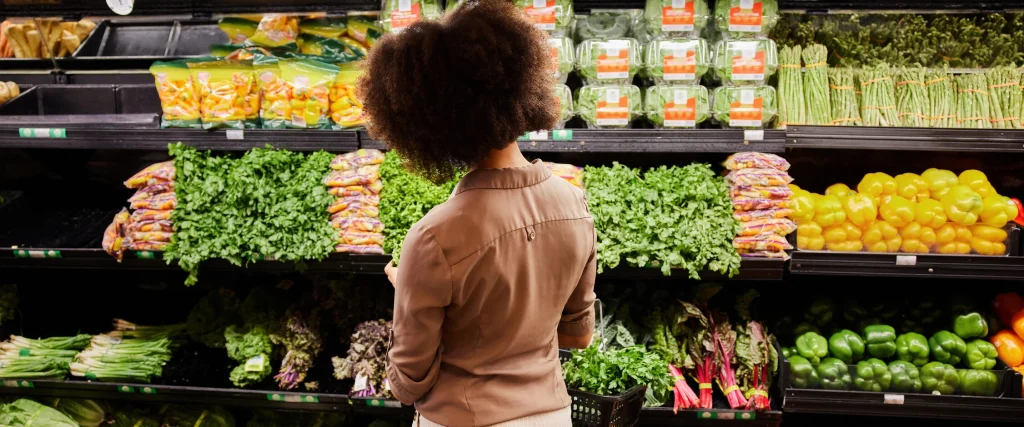Maximizing grocery savings is a goal many strive for in the US and Canada. Understanding how to shop intelligently can help stretch your budget further, without sacrificing quality or nutrition. With rising food prices, knowing strategies to keep your expenses low is essential.
This guide will provide insights into smart shopping techniques with tips and tricks to save money. Whether you’re shopping for a large family or a small household, these strategies will help you to economize while still bringing home everything you need. Let’s delve into ways to enhance our saving strategies.
Plan your shopping trips wisely

Effectively planning your shopping trips is a major step toward maximizing grocery savings. Begin by creating a weekly meal plan. Having a detailed meal plan helps you buy only what you need, reducing impulsive buys that inflate your bill.
As you plan your meals, consider ingredients that can be used across multiple dishes. This reduces waste and ensures every purchase serves multiple purposes. Furthermore, check your pantry before heading out.
Making a shopping list is another crucial element. A well-constructed list keeps you focused, ensuring you purchase necessities without distractions. Try organizing your list according to the layout of your preferred store. Group items by section or aisle, which will save time and minimize aimless wandering. This approach helps resist temptation to buy non-essential items.
Leverage coupons and loyalty programs
Coupons are a classic way to cut grocery costs. Many apps and websites offer digital coupons that can be saved directly to your phone or store card, making it simple to use them at checkout. Look for coupons on products you regularly purchase, ensuring savings on items you need.
Paper coupons are still relevant, too. Don’t overlook coupons in your local newspaper or those mailed to you. Every bit of savings adds up over time. Loyalty programs are another resource to maximize savings. Many grocery stores offer loyalty cards that accumulate points with every purchase, which can be redeemed for discounts or free products.
These programs often provide exclusive access to special sales or additional coupons. Sign up for the loyalty programs at the stores you frequent most. You’d be surprised at how quickly the rewards accumulate and contribute to lowering your grocery bill.
Embrace store brands
An often-overlooked strategy for grocery savings is purchasing store-brand items. Store brands usually offer the same quality as national brands but at a fraction of the cost. Supermarkets save on marketing and packaging with their labels, passing those savings on to you. In blind taste tests, many shoppers find that they can’t tell the difference between store-brand and more expensive, nationally branded products.
Take time to compare the ingredients and nutritional information between store and national brands. You’ll often find negligible differences. By choosing the store’s version, you’re often not compromising on quality, just the price. Be open to trying store brands on items like cereals, canned goods, and even cleaning products.
Optimize your grocery shopping routine
Creating a budget and sticking to it is fundamental to optimal grocery shopping. First, establish how much you’re willing to spend each month on groceries. Consider your typical habits and adjust your spending habits to adhere to this limit. Regularly reviewing spending can ensure you keep within your desired budget.
Shopping with cash instead of a credit card can help enforce discipline. With cash, you’ll avoid overspending since you’ll be limited to the physical money you have on hand. This can be a helpful tool if you struggle with sticking to a budget. Additionally, many people find cash purchases to feel more “real” compared to card swipes, encouraging mindfulness while shopping.
Buy in bulk when appropriate
Bulk buying can be a smart way to cut costs, particularly for non-perishable items like pasta, rice, or canned goods. Although there’s an initial larger outlay, the cost per unit is often significantly lower, resulting in long-term savings. Assess your pantry space before engaging in bulk purchases to ensure storage isn’t an issue.
Be wary of perishable goods when buying in bulk. Unless you have a large family or plan to use everything quickly, large quantities can go to waste if they spoil before consumption. Consider splitting bulk purchases with friends or family to share the cost and prevent waste. This collaborative buying can be an excellent strategy to access bulk savings without over-purchasing.
Use seasonal produce
Another effective way to save is buying seasonal produce, which is typically fresher and more affordable than out-of-season items. Seasonal fruits and vegetables are often more flavorful, too. Knowing what’s in season in your area can guide your meal planning and help you take advantage of these savings.
Additionally, seasonal produce usually comes from local farms, reducing transportation costs and supporting your local economy. Farmers’ markets are excellent places to find seasonal produce. Not only do they offer competitive prices, but they also allow you to engage directly with producers.
This interaction can sometimes lead to better deals or bulk discounts on fresh produce. Be sure to compare prices with your regular grocery store to ensure you’re getting the best value.
